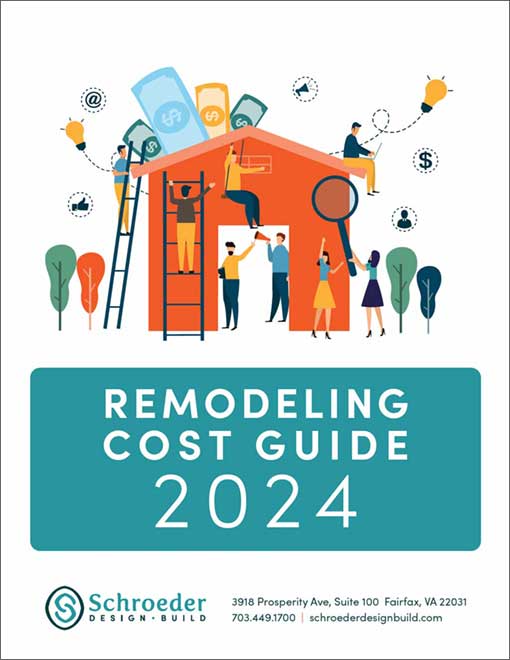Making your home truly livable means ensuring it grows with you, and not just in style, but in comfort, safety and independence. For Fairfax, VA homeowners, this practical guide offers insights on how to plan thoughtfully so your home continues to serve and support your lifestyle at every stage.
What is Living in Place?
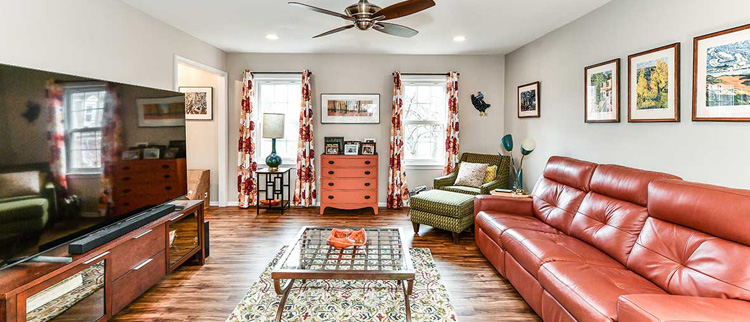
Living in Place refers to the thoughtful practice of modifying a home so its residents can live independently, comfortably and safely for as long as possible. While often associated with seniors, this approach benefits adults of all ages, especially those with chronic pain, mobility limitations or evolving health and care needs.
It’s about creating an accessible home environment that adapts as life changes. This might mean a walk-in shower instead of a tub, wider doorways for a walker or pull-out kitchen shelves to reduce strain. By focusing on both present and future needs, Living in Place allows you to remain in your community you love while enjoying the security and comfort of familiar surroundings.
Why it Matters to Fairfax Homeowners
In Fairfax County, where suburban neighborhoods are filled with family homes, the idea of adapting rather than relocating is particularly important. Fairfax’s population is aging, and more residents are looking for solutions that allow them to remain part of their beloved community while meeting their changing health needs.
Financially, modifying a home is often more cost-effective than relocating to an assisted living facility. And emotionally, it provides continuity, allowing you to maintain friendships, community connections and the unique identity you’ve built into your home.
Example: Josh, Age 52
Consider Josh, a Fairfax homeowner with a herniated disc. Small tasks most of us take for granted, like leaning over the sink, bending to reach a pan, sitting or standing to fold laundry, can create daily discomfort and frustration.
Josh initially thought Living in Place was only for retirees. But as his pain increased, he realized modifying his home wasn’t optional—it was essential for his quality of life. He installed elevated appliances, adjusted countertop heights and planned for better seating to transform his home into a supportive environment. These modifications not only gave him physical relief, he now has peace of mind knowing he can manage daily tasks without fear of worsening his condition.
What this Practical Guide Will Offer
This Guide to Living in Place provides Fairfax homeowners with a step-by-step approach to Living in Place. You’ll learn how to:
- Assess your daily living needs
- Plan ahead to make your home future-ready for accessibility
- Select modifications that improve safety, comfort and independence
- Incorporate design solutions that add value to your property
- Understand the financial considerations of Living in Place
Thrive at Home: Living in Place for Fairfax Property Owners

The Emotional and Mental Health Benefits
A study in the Archives of Psychiatric Nursing found that staying in familiar environments can reduce stress, anxiety and confusion. The presence of your own belongings, family photos, pets and routines supports emotional security and mental wellness.
Real-Life Comforts of Home
Think of your favorite sunny chair, the smell of morning coffee or your dog greeting you at the door. These everyday comforts provide stability and joy. For Fairfax homeowners, where family roots run deep, these simple pleasures matter as much as safety features for emotional grounding and a better quality of life.
Who Benefits from Living in Place?
Living in Place is not just for seniors. It serves:
- Adults managing chronic conditions such as arthritis or diabetes
- People recovering from surgeries or injuries
- Fairfax residents planning to age in their homes with dignity
- Families supporting loved ones with cognitive or invisible disabilities
Living in Place empowers people at any stage in life to thrive where they are—safely, comfortably and purposefully. It ensures your home continues to support your lifestyle rather than becoming a barrier to it well into the future.
Personalizing Your Living in Place Strategy for your Fairfax Home
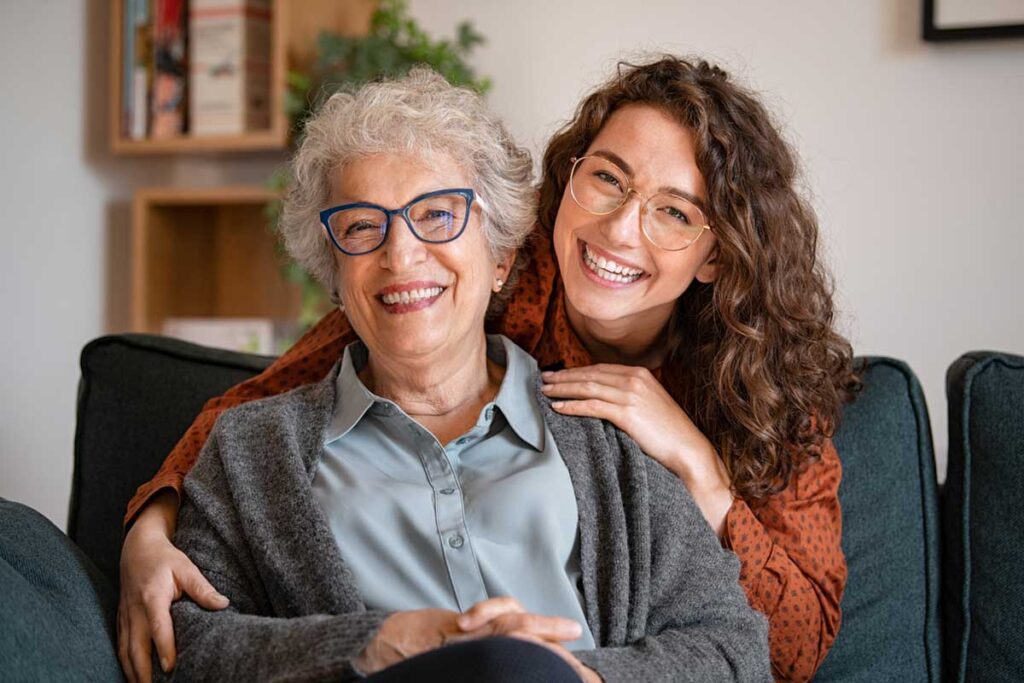
Widespread Preference to Stay Home
According to an AARP survey, 76% of adults aged 50 and older want to remain in their homes as they age. This preference is not only sentimental, it reflects their desire for independence, dignity and control.
The Role of Home Modifications in Independence
Research published in PMC shows that well-planned home modifications reduce reliance on external care, helping older residents and those with disabilities remain independent longer. The most effective solutions are not one-size-fits-all. They’re tailored to the residents’ health, lifestyle and family needs.
Your Home as a Living, Evolving Space
Homes should adapt as lives change. A sprained ankle, a chronic illness’s progression or the addition of a live-in caregiver can all require adjustments. By viewing your home as an evolving private sanctuary, you can ensure it continues to serve you across life’s stages, both emotional and physical.
The Fairfax Advantage
Local expertise matters. Schroeder Design Build brings decades of experience in Fairfax County remodeling, with a deep understanding of suburban housing styles and community development trends along with thoughtful, strategic planning. Partnering with a Fairfax-based design build firm means working with local contractors who know how to blend accessibility with aesthetics to create spaces that are both functional and beautiful, following housing and community trends supporting this type of aging and living strategy.
Step 1 – Recognize the Changes in Your Daily Needs

Why This Step Matters
Before investing in modifications, recognize how your daily needs are evolving in terms of physical ability and self-care. This self-awareness allows for proactive planning and customized modifications that evolve with your needs, reducing the risk of sudden and costly adjustments later.
Ask yourself these self-reflection questions:
- Which tasks are becoming more difficult or painful?
- Are my health conditions likely to change or worsen over time?
- Do certain activities cause fatigue, stress, discomfort or risk of injury?
Activity Rating System
Use scale from 1 to 5 to rate these tasks, with 1 as the most independent and 5 requiring full assistance. Involve family or caregivers in this discussion; they may notice changes you’ve overlooked.
Basic Daily Home Activities
| Activity | Description | Your Rating |
| Walking (Ambulating) | Moving safely indoors or outdoors safely, with or without mobility aids. | |
| Transferring | Getting up, sitting down, moving between surfaces or positions. May include use of a walker or assistive device. | |
| Housecleaning & Maintenance | Managing daily household tasks, cleaning up after meals, basic home upkeep. | |
| Dressing & Grooming | Selecting and putting on clothing, managing hair and personal hygiene. | |
| Toileting | Getting to and from toilet, using it safely, cleaning oneself. | |
| Bathing | Washing face and body in a shower or bath, entering and exiting bathing area safely. | |
| Meal Preparation | Cooking, organizing and storing meals independently. |
Step 2 – Future-Proof Your Fairfax Home with Smart Planning
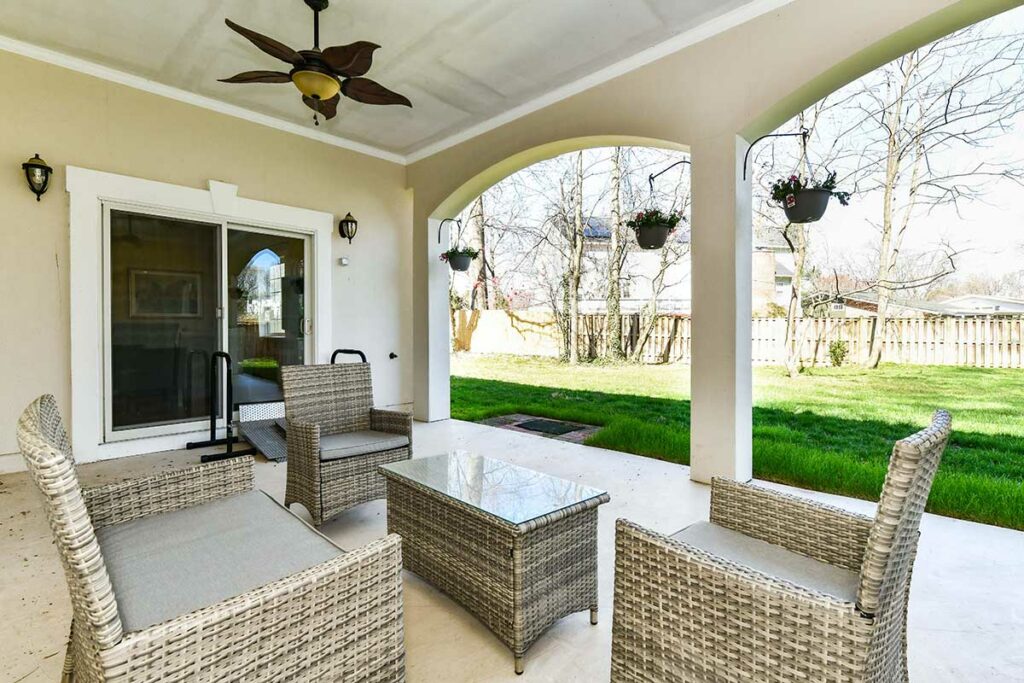
Why Planning Ahead Matters
Health conditions, especially chronic illnesses, progress with time. Proactive planning means making changes now that will continue to serve you in the years ahead, rather than having you scrambling in response to a crisis with the accompanying emotional and financial stress of emergency retrofitting or relocation.
Use Your Activity Ratings as a Guide
Your self-assessment scores highlight which areas of your home require immediate or future attention. A low score in bathing, for example, suggests prioritizing bathroom safety and accessibility.
Room-by-Room Safety & Access Audit
View your home with a critical eye, using the following checklist to help identify potential issues.
Floors – Safe and Slip-Resistant Surfaces
- Exterior entrances or indoor areas do not contain potential tripping hazards like loose throw rugs or uneven flooring
- Non-slip mats or strips have been added to tile, wood or other surfaces that may become slippery when wet
- Carpets and rugs are firmly secured to the floor, with no loose edges or curling corners
- Walking paths throughout the home are clutter-free and free from obstacles like furniture or electrical cords
Stairs – Stability and Safety on Every Step
- Stairs are easy to navigate. Or would adding a ramp or safety gate improve access or safety?
- Sturdy handrails are installed on both sides of the staircase for added support
- Handrails extend beyond the first and last steps to assist with balance during transitions
- Outdoor steps are slip-resistant, with textured surfaces to prevent falls in wet or icy conditions
- Step edges are marked with bright or reflective tape for better visibility
Bathrooms – Minimize Risk in a High-Risk Area
- Grab bars are firmly installed near the toilet, bathtub and shower for stability and support
- Non-skid adhesive strips or safety mats are placed inside the tub and shower to prevent slipping
- Slip-resistant surfaces or mats are positioned near the sink, tub and toilet to reduce fall risks
- A plastic shower stool and handheld shower head are available to support seated and safer bathing
- The water heater is adjusted to a safe temperature of 120°F to prevent accidental scalding.
- A nightlight is installed in or near the bathroom to improve nighttime visibility
Kitchen – Prioritize Safety and Function
- The stove has safety knobs and an automatic shut-off feature to prevent accidental burns or fires
- The refrigerator is checked regularly and stocked with fresh, unexpired food
- Essential pantry stables, such as cereal, canned goods or dry foods, are readily available in the cabinets
- A drain trap is installed in the sink to prevent clogs and maintain a safe water flow
Outdoors – A Safer Path to Home
- There is a bench or small table near the front door to hold bags or packages while unlocking the door
- Outdoor lighting is bright and reliable enough to ensure safe visibility during the evening or nighttime
- Outdoor pathways are clear of hoses, uneven pavement, loose bricks or other tripping hazards
- Motion-activated or sensor lights have been installed to automatically illuminate walkways and entry points
- If there is a swimming pool, it is fully enclosed with a secure fence, locked gate or protective cover to ensure safety
- If mobility aids are used, can ramps be added to entryways for safer, easier access to the home?
Step 3 – Select Home Modifications That Serve a Purpose

Not All Modifications are One-Size-Fits-All
Every health or age condition presents different mobility, dexterity or visibility challenges. Personalization ensures your modifications enhance, not hinder, your lifestyle, and considers specific current and future needs, not simply general aging concerns.
Consider Comfort & Usability
Customization helps ensure your solutions are practical and empowering, and not just “accessible.” As an example, a foam-wrapped grab bar can provide a secure, comfortable grip for someone with arthritis, while a metal bar may cause discomfort.
Think Beyond Short-Term
Future-proofing your home means anticipating how your needs may or will evolve with changing health. A walk-in shower may serve you now, but planning for built-in seating may ensure it remains useful later. Plan not only for now, but for the future. Use Step 1’s self-assessment and Step 2’s planning audit to explore modifications you may need now or in the future.
Modification Examples
Flooring
Non-Slip Flooring
- Function: Safer walking surfaces in kitchens, bathrooms and entryways, especially when wet
- Installation Costs:
- Timeline:
Smooth Transitions Between Rooms
- Function: Eliminate tripping hazards and accommodate wheelchairs/walkers with level, seamless thresholds
- Installation Costs:
- Timeline:
Bathrooms
Walk-in Showers and Tubs
- Function: Low- or no-threshold entry minimizes trip hazards; built-in seating and handheld shower heads support safe, independent bathing
- Installation Costs:
- Timeline:
Grab Bars
- Function: Provide steady support near toilets and showers to prevent slips and falls; textured and foam-wrapped options increase grip comfort
- Installation Costs:
- Timeline:
Elevated Toilet Seats
- Function: Reduce the need to bend or strain knees and hips—ideal for arthritis or limited lower-body strength
- Installation Costs:
- Timeline:
Kitchen
Varied Countertop Heights
- Function: Accommodate both standing and seated users; make prep and cleanup easier for wheelchair users or those with back pain
- Installation Costs:
- Timeline:
Elevated and Front-Controlled Appliances
- Function: Reduce bending and reaching, front controls allow safer, easier access for seated or mobility-limited users
- Installation Costs:
- Timeline:
Pull-Out Shelves
- Function: Maximize cabinet storage while minimizing strain—items slide into easy reach without crouching or stretching
- Installation Costs:
- Timeline:
Lighting
Motion-Sensored Smart Lighting
- Function: Automatically lights pathways at night or during movement—ideal for fall prevention and for those with limited visibility or memory challenges
- Installation Costs:
- Timeline:
Dimmable Lights and Lighting Control
- Function: Support light sensitivity, reduce glare and allow easy lighting adjustments for visual comfort and accessibility
- Installation Costs:
- Timeline:
Doorways and Hallways
Widened Doorways
- Function: Improve accessibility for mobility devices like walkers or wheelchairs and reduce turning difficulty in narrow halls
- Installation Costs:
- Timeline:
Lever Handles Over Knobs
- Function: Easier to open for those with arthritis or limited grip strength; usable with elbows or closed fists
- Installation Costs:
- Timeline:
Step 4 – Plan Your Living Space with Health and Care in Mind
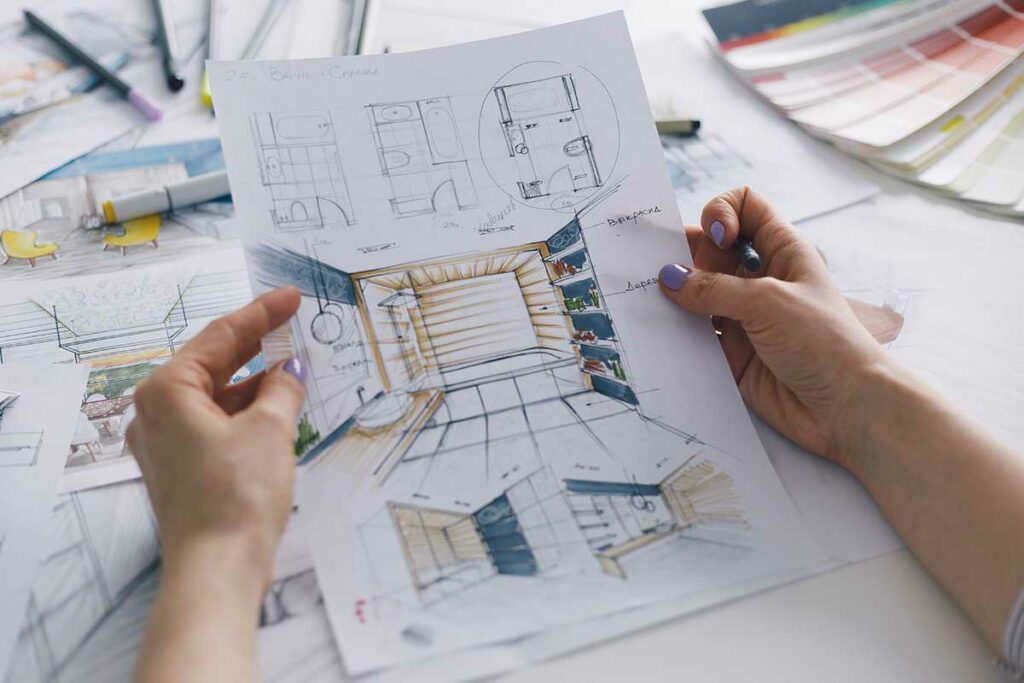
Why Space Planning Matters in Living in Place
The way your home is laid out can make daily routines either effortless or exhausting. It can easily influence how you can move, rest and engage in everyday activities. Proper space planning minimizes physical strain, supports your natural routines and enhances safety, especially for those with chronic conditions, fatigue or mobility challenges.
What to Consider When Reconfiguring Your Home
- How much walking or movement is required to move from task to task?
- Are important areas like the kitchen, bathroom or living spaces easily accessible without stairs or unnecessary turns?
- Could shifting furniture around or repurposing rooms better support your needs?
Types of Adjustments to Explore
- Rearranging furniture for open pathways and wider mobility clearance
- Converting a first-floor space into a bedroom or bath to avoid stairs
- Installing wider doors or smart storage solutions to reduce reaching and bending
- More significant options: opening floor plans or reconfiguring traffic flows for convenience
Example: Small Changes That Made a Big Difference in Comfort and Independence
A Fairfax woman who loves to knit while listening to podcasts is living with chronic pain. Her current home required her to walk a long distance between the kitchen and her favorite living room chair.
She shortened the distance between her kitchen and living room by opening her floor plan. This small change saves energy, reduces her fatigue and pain and allows her to enjoy her hobbies again.
Step 5 – Continuous Help Through Consultation & Collaboration

Living in Place in an Ongoing Process
Health conditions, mobility levels and personal needs can change gradually or quickly. As your needs change, so must your home. Regular evaluations and ongoing support help you adapt without feeling overwhelmed or falling behind in safety or comfort.
Why Regular Check-Ins Matter
By scheduling assessments or touchpoints regularly, you can make adjustments before small challenges turn into big problems. These can lead to updates in lighting updates, accessibility features, room function or smart home systems.
The Value of a Collaborate Approach
Homeowners, families and design build professionals work together to evaluate what’s working, what can be improved, and to create adaptive, comfortable spaces. This collaboration ensures that every decision will reflect your lifestyle, medical needs and evolving goals. Your home should reflect your evolving life—not hold you back. And that requires planning and partnership.
How Schroeder Design Build Supports You
With certified Aging-in-Place specialists, Schroeder Design Build offers ongoing consultation, clear communication and expert guidance for its remodeling services tailored to Fairfax homeowners, From minor updates to major renovations, you’ll always have a trusted partner in Schroeder throughout the lifetime of your home.
What Does Living in Place Cost in Fairfax County?

Why Financial Planning is Essential
While remodeling requires an upfront investment, it often costs less than long-term care facilities. Anticipating your needs now helps you avoid high recurring expenses and provides greater control over how and where you live.
Comparing Costs
Genworth’s 2020 Cost of Care Survey shows assisted living facilities can range from $3,000 to $6,978 per month, with a cost of $36,000 to $83,736 annually. These fees often offer no return on investment.
Average Costs of Aging in Place Modifications
Living in Place updates can range from $19,514 to $87,474, depending on their scope and extent. Unlike facility fees, these costs are one-time investments that can be personalized and planned in phases, with long-term financial and personal returns.
Return on Investment
The National Association of Home Builders (NAHB) reports that aging-friendly features such as zero-step entries and wider doorways can increase resale value by up to 7%—an attractive prospect in Fairfax’s competitive real estate market where multi-generational living is on the rise and Universal Design features are popular.
The Long-Term Value of Customization
Rather than paying monthly fees at a care facility, you are investing in your own property, comfort and independence with updates that suit your personal needs. Your home will ensure your lifestyle continuity and familiar surroundings while enhancing your mental wellness and daily satisfaction with life.
Start Your Living in Place Journey. Contact Schroeder Design Build Today.

Living in Place is more than remodeling; it’s about reshaping your home into a supportive, future-ready environment. From self-assessment to financial planning, this Guide empowers Fairfax homeowners to make informed, practical decisions about their environment and well-being.
Why Now is the Right Time
Whether you’re preparing for the future, supporting a loved one or addressing current needs, starting early keeps you ahead of changing needs. Customizing your home allows for greater independence, comfort and security—on your terms.
How Schroeder Design Build Can Help
Founded in 1986, Schroeder Design Build combines design expertise with certified health-focused planning to create homes that grow with you. As a trusted design build firm serving Fairfax and Northern Virginia, we bring creative design, health-focused solutions and quality construction under one roof, and you’ll work closely with our certified Aging-in-Place specialists, designers and project managers dedicated to helping you live safely, comfortably and confidently at home.
Take the first step today and let’s explore your vision for Living in Place—together. Contact Schroeder Design Build for your complimentary design consultation and begin planning your forever home.


